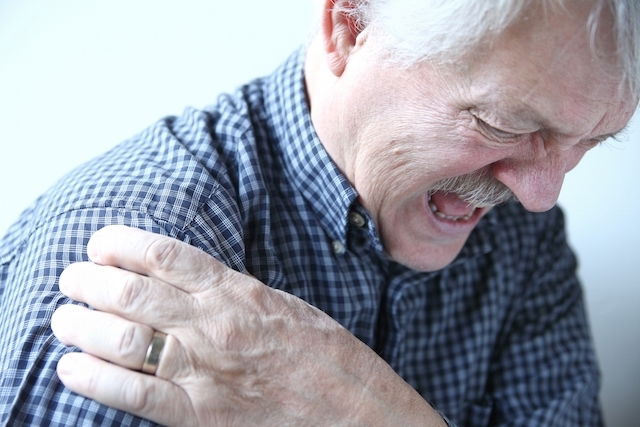Bursitis treatment is aimed at relieving pain and reducing inflammation of irritated bursae. A bursa is a pocket of fluid that cushions the friction between the tendons and bones or skin in the joint, and become swollen from direct trauma or overuse injuries.
Home measures can also be implemented when taking bursitis medication, such as rest and ice packs. These are natural ways to reduce inflammation and symptoms like pain, swelling, redness and difficulty moving the affected area, Bursae are located throughout the body, and are most commonly affected in the shoulder, hip, elbow or knee, for example.
The inflammation that occurs in bursitis can have various underlying causes, such as bumps, repetitive strain, arthritis or infections. Many patients with worsening tendonitis may also experience bursitis. Bursitis medication and treatment should be directed by a doctor, who will assess your condition and recommend the best treatment approach.

Bursitis medication
The most commonly-prescribed medications for bursitis are:
1. Anti-inflammatory drugs
Anti-inflammatory drugs, such as diclofenac (Voltaren, Cataflam), ibuprofen (Advil) or ketoprofen (Profenid) can be prescribed in tablet, injectable or gel form. These help to reduce inflammation and pain.
You should avoid using anti-inflammatories for more than 7 to 10 days, or repeatedly, as they can cause side effects in the body, such as kidney damage or stomach ulcers, for example. If pain persists even with this medication, you are advised to follow-up with your doctor for reassessment.
Like tablets, anti-inflammatory ointments should not be used continuously, but should be used for up to 14 days or as advised by your doctor.
2. Corticosteroids
Corticoid injections, such as methylprednisolone or triamcinolone, are often dispensed in combination with 1-2% lidocaine. These are usually administered by the doctor in cases of bursitis that do not improve with oral medications, or for chronic cases of bursitis. This medication is injected to have a more direct effect inside the inflamed joint, which can be more effective and faster than other forms of treatment.
Depending on the type of bursitis, the doctor may prescribe an oral corticosteroid such as prednisone (Prelone, Predsim) for a few days to help relieve pain.
3. Muscle relaxants
Muscle relaxants, such as cyclobenzaprine (Flexeril, Amrix), are also useful for treating the discomfort caused by bursitis, particularly in cases in which muscle tension contributes to inflammation.
4. Antibiotics
If an infection is suspected as the cause of bursitis, the doctor may prescribe antibiotics in tablet or injection form. Many times, a specimen of the bursae fluid will be aspirated and sent to the lab to help identify the specific microorganism causing the infection.

Home remedies
An excellent home remedy for acute bursitis is to apply ice compresses to the affected joint for 15 to 20 minutes, about 4 times a day, for 3 to 5 days.
This treatment will work best in the acute phase of inflammation, especially when there is pain, swelling and redness. During this stage, it is also important to rest so that moving the joint does not worsen the condition.
Some physiotherapy exercises can also be done at home, such as stretching, flexibility and proprioception, which help with recovery.
When to have physiotherapy
Ideally, physiotherapy should be carried out in all cases of bursitis or tendonitis. Physiotherapy treatment involves techniques and exercises that aim to increase the mobility of the affected joint and muscle to improve their function. It should ideally be done at least twice a week to to daily until the injury is resolved.






























